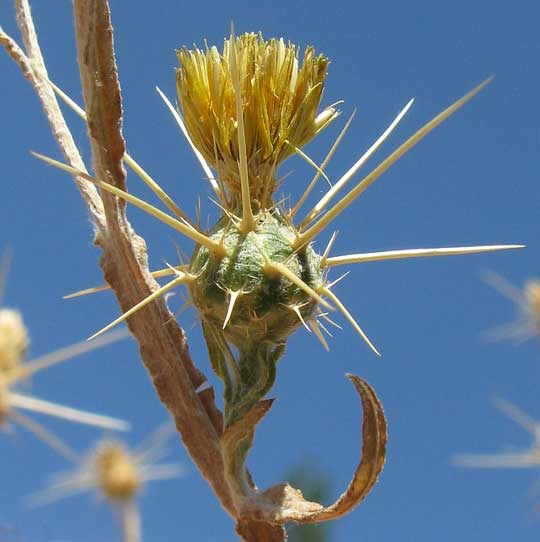
A
VARIETY OF COMPOSITE FAMILY
BLOSSOM INVOLUCRES
The involucre of the Cowpen Daisy, Verbesina enceliodes, consists of several series of overlapping, sharp-pointed, hairy phyllaries, shown below.

The involucre of the Rocklettuce, Pinorapappus roseus, also consists of several several series of overlapping, sharp-pointed phyllaries, but they're not hairy, are much broader, and broad at the top.
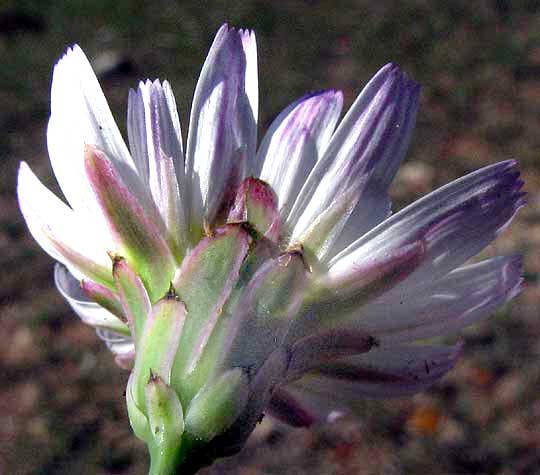
The Rock Daisy, Melampodium leucanthum, has only five phyllaries and they're fused together at their bases, forming a kind of bowl, as shown below:
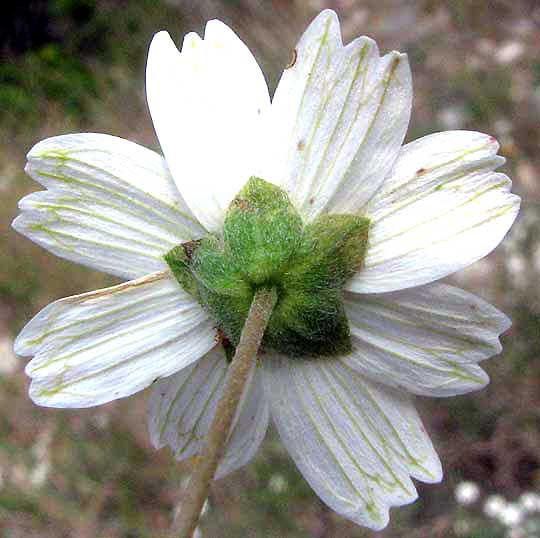
The Small-flower Desert-chicory, Pyrrhopappus pauciflorus, has an involucre consisting of two distinct rows of phyllaries: a series of short ones at the bottom, and a series of more numerous, much longer ones above those:
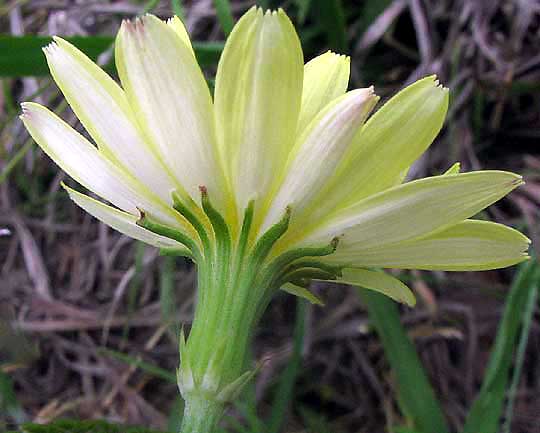
Phyllaries of the Tarweed, Madia elegans, are heavily covered with hairs tipped with sticky glands that trap insects flypaper-like climbing up the stem:
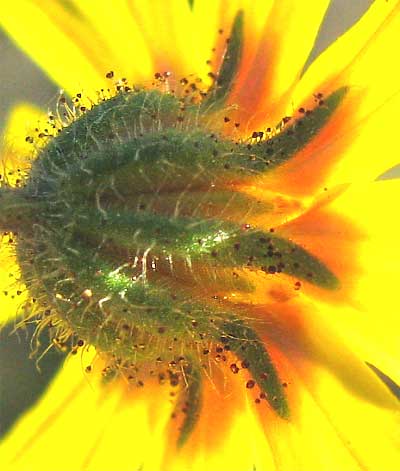
Phyllaries of the Musk Thistle, Carduus nutans, are stiff and sharp-pointed, protecting the flower head in its bud stage by encasing it, and protecting the head when the flowers are mature by pointing downward beneath it.
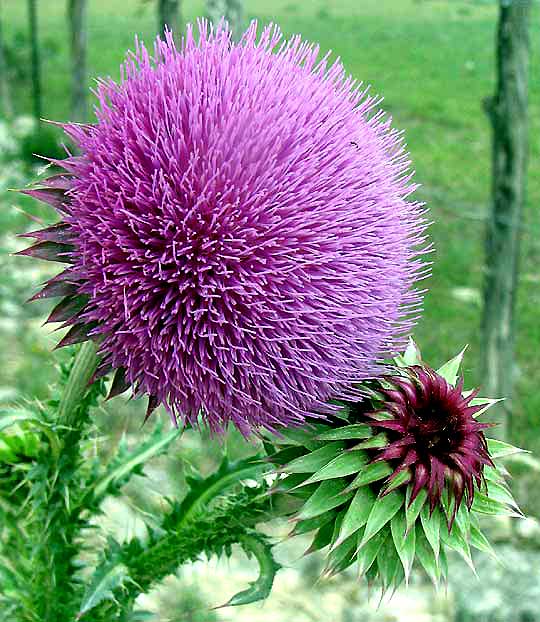
Phyllaries of the Yellow Starthistle, Centaurea solstitialis, bear long, branched, hard and sharp spines.
